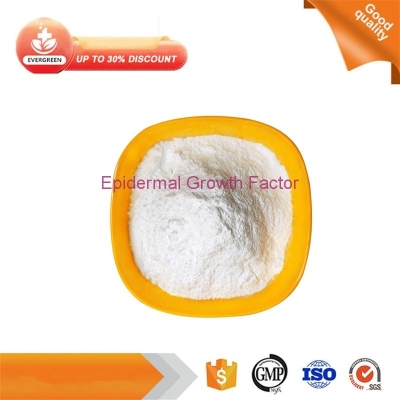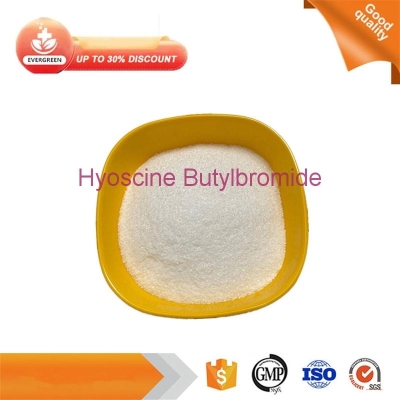-
Categories
-
Pharmaceutical Intermediates
-
Active Pharmaceutical Ingredients
-
Food Additives
- Industrial Coatings
- Agrochemicals
- Dyes and Pigments
- Surfactant
- Flavors and Fragrances
- Chemical Reagents
- Catalyst and Auxiliary
- Natural Products
- Inorganic Chemistry
-
Organic Chemistry
-
Biochemical Engineering
- Analytical Chemistry
- Cosmetic Ingredient
-
Pharmaceutical Intermediates
Promotion
ECHEMI Mall
Wholesale
Weekly Price
Exhibition
News
-
Trade Service
The standard treatment for unresectable metastatic colorectal cancer (mCRC) is generally dual-agent chemotherapy combined with anti-EGFR/anti- vascular therapy
The standard treatment for unresectable metastatic colorectal cancer (mCRC) is generally dual-agent chemotherapy combined with anti-EGFR/anti- vascular therapy
The study retrospectively collects relevant data of patients who meet the research criteria
The study retrospectively collects relevant data of patients who meet the research criteria
355 patients were included in the study, of which 118 (33.
The median follow-up time of the total population was 33.
The median OS of 5-FU/LV+anti-EGFR, anti-EGFR, 5-FU/LV, and non-maintenance treatment groups were 39.
After adjusting the key covariates, multivariate analysis found that compared with non-maintenance treatment, the 5-FU/LV+ anti-EGFR group (HR = 0.
The ORR of 5-FU/LV+anti-EGFR, anti-EGFR, 5-FU/LV and non-maintenance treatment groups were 78% (95%CI = 69.
Efficacy assessment Efficacy assessment
5-FU / LV + anti- EGFR , anti- EGFR , and 5-FU / LV maintained during therapy the most frequently occurring AEs non-hematologic ( respectively 24.
6% , 9.
1% and 27.
3%) , hematology ( respectively 22.
9% , 7.
6 % and 27.
3%) , neutropenia ( respectively 20.
3% , 7.
6% and 9.
1%) , rash ( respectively 65.
3% , 68.
2% and 9.
1%) , paronychia / nail disease ( respectively 33.
1% , 19.
7% and 0.
0%)
.
existAmong G3-G4 AEs , diarrhea was more common in the 5-FU/LV cohort (9.
1%) , while rash was more common in the 5-FU/LV+ anti- EGFR and anti- EGFR groups (8.
5% and 9.
1%)
.
In general, compared with the 5-FU/LV+ anti- EGFR and anti- EGFR groups, the non-maintenance treatment group had a higher incidence of any grade of non-hematological and hematological AEs , diarrhea and neutropenia
.
6% , 9.
1% and 27.
3%) , hematology ( respectively 22.
9% , 7.
6 % and 27.
3%) , neutropenia ( respectively 20.
3% , 7.
6% and 9.
1%) , rash ( respectively 65.
3% , 68.
2% and 9.
1%) , paronychia / nail disease ( respectively 33.
1% , 19.
7% and 0.
0%)
.
existAmong G3-G4 AEs , diarrhea was more common in the 5-FU/LV cohort (9.
1%) , while rash was more common in the 5-FU/LV+ anti- EGFR and anti- EGFR groups (8.
5% and 9.
1%)
.
In general, compared with the 5-FU/LV+ anti- EGFR and anti- EGFR groups, the non-maintenance treatment group had a higher incidence of any grade of non-hematological and hematological AEs , diarrhea and neutropenia
.
5-FU / LV + anti- EGFR , anti- EGFR , and 5-FU / LV maintained during therapy the most frequently occurring AEs non-hematologic ( respectively 24.
6% , 9.
1% and 27.
3%) , hematology ( respectively 22.
9% , 7.
6 %And 27.
3%) , neutropenia ( respectively 20.
3% , 7.
6% and 9.
1%) , rash ( respectively 65.
3% , 68.
2% and 9.
1%) , paronychia / nail disease ( respectively 33.
1% , 19.
7 % And 0.
0%)
.
Among G3-G4 AEs , diarrhea was more common in the 5-FU/LV cohort (9.
1%) , while rash was more common in the 5-FU/LV+ anti- EGFR and anti- EGFR groups (8.
5% and 9.
1%)
.
In general, with 5-FU/LV+ anti- EGFR and anti- EGFRCompared with the non-maintenance treatment group, the incidence of any grade of non-hematological and hematological AEs , diarrhea and neutropenia was higher in the non-maintenance treatment group .
Adverse events
Adverse events Adverse events
In the 5-FU/LV+ anti- EGFR , anti- EGFR and 5-FU/LV groups, 80.
5% , 90.
9% and 81.
8% of the patients respectively completed the planned induction therapy
.
Among them, 68.
2% , 77.
6% and 63.
6% stopped maintenance treatment due to disease progression
.
On the other hand, in the non-maintenance group, 43.
1% and 43.
8% of patients stopped induction therapy due to disease progression and completion of planned treatment
.
5% , 90.
9% and 81.
8% of the patients respectively completed the planned induction therapy
.
Among them, 68.
2% , 77.
6% and 63.
6% stopped maintenance treatment due to disease progression
.
On the other hand, in the non-maintenance group, 43.
1% and 43.
8% of patients stopped induction therapy due to disease progression and completion of planned treatment
.
In the 5-FU/LV+ anti- EGFR , anti- EGFR and 5-FU/LV groups, 80.
5% , 90.
9% and 81.
8% of the patients respectively completed the planned induction therapy
.
Of which 68.
2% , 77.
6% and63.
6% stopped maintenance treatment due to disease progression
.
On the other hand, in the non-maintenance group, 43.
1% and 43.
8% of patients stopped induction therapy due to disease progression and completion of planned treatment
.
In summary, studies have shown that in patients with left RAS/BRAF wild-type metastatic colorectal cancer (mCRC), after first-line anti-epidermal growth factor receptor (EGFR)-based treatment, 5-FU/LV+anti-EGFR is more appropriate Effective and safe means of maintenance
.
left RAS/BRAF wild-type metastatic colorectal cancer (mCRC), after first-line anti-epidermal growth factor receptor (EGFR)-based treatment, 5-FU/LV+anti-EGFR is more appropriate Effective and safe means of maintenance .
In summary, the study shows that the left study shows that the left study shows that patients with RAS/BRAF wild-type metastatic colorectal cancer (mCRC)
on the left are treated with a first-line anti-epidermal growth factor receptor (EGFR)-based regimen.
5-FU/LV+anti-EGFR is a more suitable, effective and safe maintenance method .
RAS/BRAF wild-type metastatic colorectal cancer (mCRC) patients, after first-line anti-epidermal growth factor receptor (EGFR)-based treatment, 5-FU/LV+anti-EGFR is a more appropriate, effective and safe maintenance method
.
Original source:
Original source:Parisi A, Cortellini A, Venditti O, et al (2021) Post-Induction Management in Patients With Left-Sided RAS and BRAF Wild-Type Metastatic Colorectal Cancer Treated With First-Line Anti-EGFR-Based Doublet Regimens: A Multicentre Study.
Front.
Oncol.
11:712053.
doi: 10.
3389/fonc.
2021.
712053
Front.
Oncol.
11:712053.
doi: 10.
3389/fonc.
2021.
712053 Parisi A, Cortellini A, Venditti O, et al (2021) Post-Induction Management in Patients With Left-Sided RAS and BRAF Wild-Type Metastatic Colorectal Cancer Treated With First-Line Anti-EGFR-Based Doublet Regimens: A multicentre Study Front Oncol 11:.
.
.
712053 doi:.
10.
3389 / fonc.
2021.
712053
in this message







